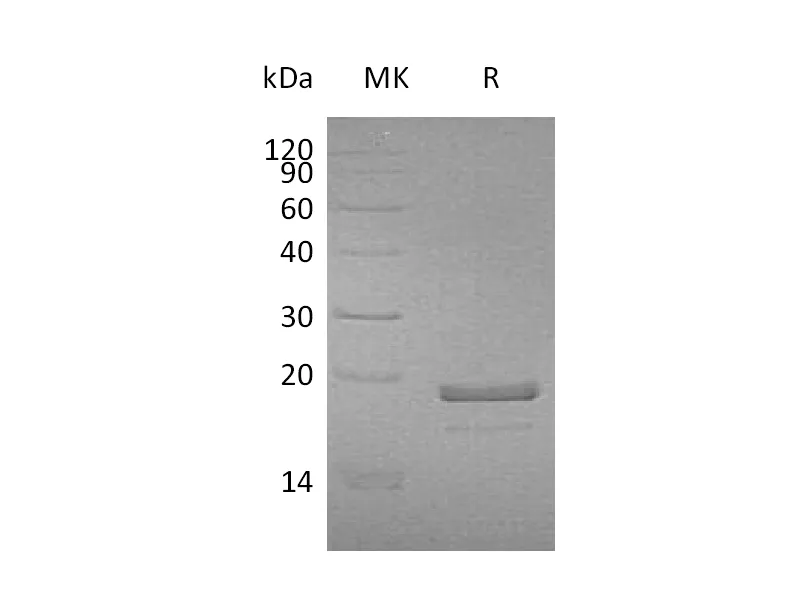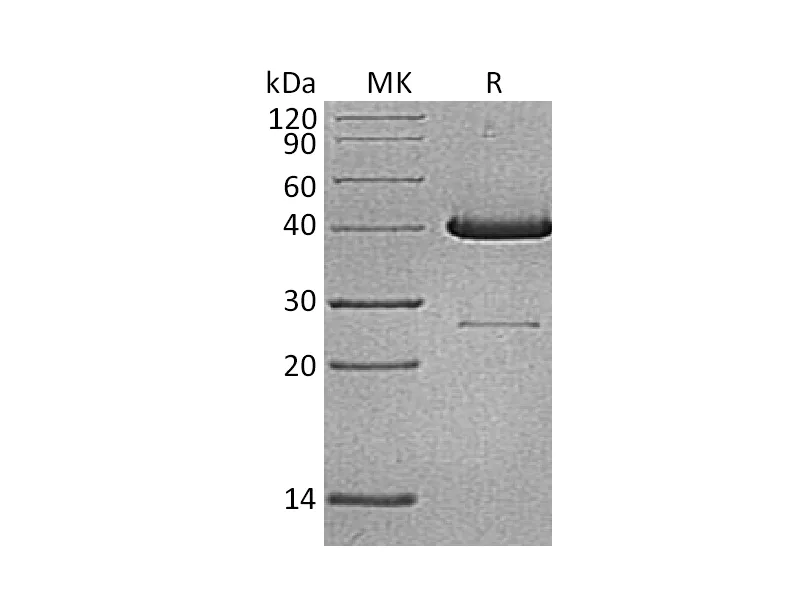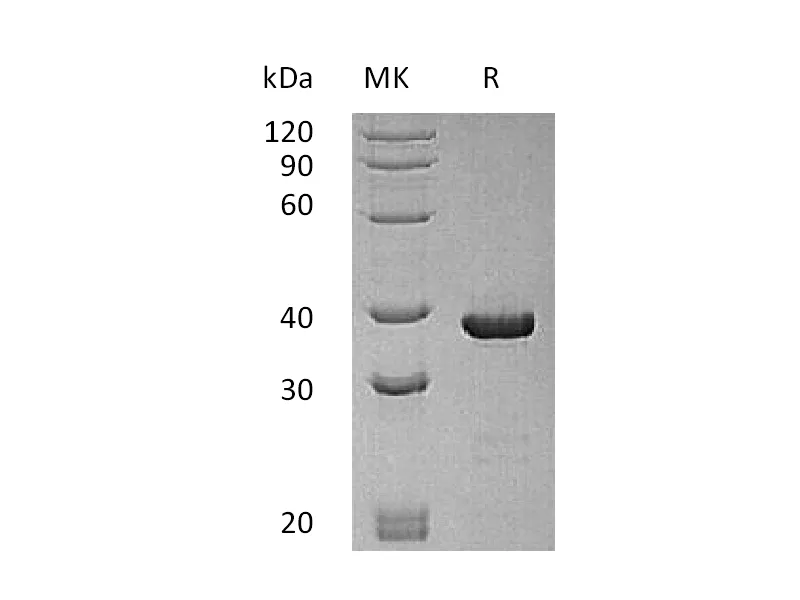| 产品名称 |
Recombinant Human SPINK4 (C-6His) |
| 英文名称 |
SPINK4/Serine protease inhibitor Kazal-type |
| 纯度 |
Greater than 95% as determined by reducing SDS-PAGE |
| 内毒素 |
<1 EU/µg as determined by LAL test. |
| 蛋白构建 |
Recombinant Human Serine Protease Inhibitor Kazal-Type 4 is produced by our Mammalian expression system and the target gene encoding Gly27-Cys86 is expressed with a 6His tag at the C-terminus. |
| Accession |
O60575 |
| 表达宿主 |
Human Cells |
| 种属 |
Human |
| 预测分子量 |
7.73 KDa |
| 制剂 |
Lyophilized from a 0.2 μm filtered solution of PBS, 1mM EDTA, 5% Trehalose, pH 7.4. |
| 运输方式 |
The product is shipped at ambient temperature.Upon receipt, store it immediately at the temperature listed below. |
| 稳定性&储存 |
Store at ≤-70°C, stable for 6 months after receipt.Store at ≤-70°C, stable for 3 months under sterile conditions after opening. Please minimize freeze-thaw cycles. |
| 复溶 |
Always centrifuge tubes before opening.Do not mix by vortex or pipetting.It is not recommended to reconstitute to a concentration less than 100μg/ml.Dissolve the lyophilized protein in distilled water.Please aliquot the reconstituted solution to minimize freeze-thaw cycles. |
| 分子别名 |
| Serine Protease Inhibitor Kazal-Type 4; Peptide PEC-60 Homolog; SPINK4 |
| 背景介绍 |
| Serine Protease Inhibitor Kazal-Type 4 (SPINK4) is a secreted protein containing one Kazal-like domain. SPINK4 is a member of the SPINK protein family. The gene family of serine protease inhibitors of the Kazal type (SPINK) are functional and positional candidate genes for celiac disease (CD). SPINK1 plays an important role in protecting the pancreas against excessive trypsinogen activation. It is a potent natural inhibitor of pancreatic trypsin activity. SPINK1 mutations are associated with the development of acute and chronic pancreatitis and have been detected in all forms of chronic pancreatitis. SPINK2 functions as a trypsin/acrosin inhibitor and is synthesized mainly in the testis and seminal vesicle where its activity is engaged in fertility. The SPINK2 protein contains a typical Kazal domain composed by six cysteine residues forming three disulfide bridges. SPINK9 was identified in human skin. Its expression was strong in palmar epidermis, but not detectable or very low in non palmoplantar skin. |
注意事项
本司产品仅用于科研,不用于临床诊断和治疗




